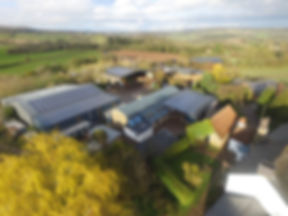
WALKING THE WYE VALLEY
Caplor Glamping & Lodges is situated on the Hereford to Ross on Wye stretch of the Wye Valley Walk, the route actually runs through Caplor Farm.
Caplor Glamping & Lodges
Caplor Farm


Step into the pages of history at Caplor Farmhouse, where tales of ancient chieftains, Roman conquerors, and medieval pilgrims await.
This charming 18th or 19th century farmhouse stands on the site of an even more ancient dwelling, hinted at by documents dating back to the early 17th century. While the barn and granary have weathered the centuries since the 14th century, the barn tragically fell victim to a ravaging fire, leaving only wistful stone foundations behind. But the farm's true treasure lies just up the hill - the breath-taking Iron Age hillfort of Capler Camp.
Excavations here revealed artefacts of bronze- and iron-working, pottery-making, and other industries that once buzzed within its ancient ramparts. A 2nd century Roman coin whispers of conquest, even as Neolithic and Bronze Age tools speak of an even more distant past. Local lore holds that this hillfort is the burial place of a British chieftain, a poignant monument to a vanished people. Indeed, history springs from the very soil here.
After the Romans pushed out the native tribes, these displaced people resettled in the secluded valleys below. Footpaths converging at Caplor Farm indicate this site's enduring importance over countless generations. Follow one path to glimpse remnants of a sunken road to the river crossing, now long forgotten or trace another to the pilgrim's chapel of St. Dubricus, patron saint of the ancient lane. Will you uncover more of Caplor Farm's captivating history? Climb the wooded path by the glamping pods to explore Woldbury Camp yourself (another ancient name for the hillfort). Tread carefully on steep, muddy slopes and you may be rewarded with glimpses of roe deer or elusive muntjac in the misty dawn light.
At Caplor Farm, the spirit of the past is never far away.


